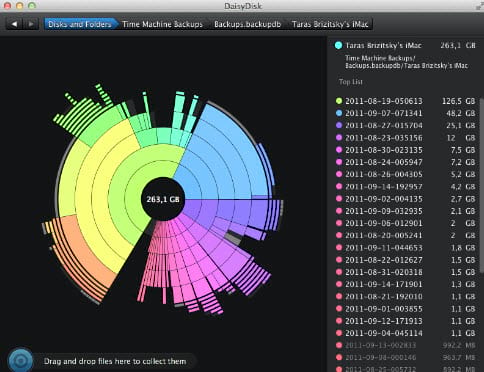Disk Inventory X is a free disk space analyzer, available for Mac OS X 10.3 and later versions. This app presents an overview of all disks on a machine. The results are presented in a graphical way called tree map. Jan 09, 2020 Disk Inventory X is a free disk space analyzer, available for Mac OS X 10.3 and later versions. This app presents an overview of all disks on a machine. The results are presented in a graphical way called tree map. Disk Inventory X – Professional Mac Disk Space Analyzer. Compatible OS: macOS 10.3 and later. Disk Inventory X is another free disk analyzer tool for Mac. The app via treemap shows an overview of all disks in a machine. The size of each file is specified, and more specific data about each file is also available. Disk Inventory X. Disk Inventory X is one of the best disk analyzers for Mac. The best part of this disk analyzer is, you can download it for free. Comparing to daisy disk, the features are more or less same. The visual graph in Disk Inventory X is different and easy for navigation. Here the visual map is called “ Tree Maps ” which shows.
Disk Analyzer Pro App



Disk Space Analyzer Mac Free Version
DiskSavvy allows one to save disk space analysis reports into a number of standard report formats including HTML, PDF, Excel, XML, text and CSV.In the simplest case, perform a disk space analysis operation and press the 'Save' button located on the main toolbar. On the save report dialog,select an appropriate report format, enter a report file name and press the 'Save' button. For the HTML, PDF, Excel, text, CSV and XML report formats, the user is provided with the ability to save a short summary report or a longer detailed report,which may be very long for large file systems containing millions of files. By default, DiskSavvy will save a short, summary disk space analysis reportin the HTML report format, which will include a top-level view of analyzed disks or directories and a list of tables showing the disk space usage andthe number of files per file extension, file type, user name, etc. In addition, the user is provided with the ability to save disk space analysis results to the DiskSavvy native report format, which preserves all informationrelated to each specific disk space analysis operation and may be loaded at any time by using the DiskSavvy GUI application. Microsoft Excel Reports Sometimes, it may be required to perform additional analysis of disk space usage results using external tools such as Microsoft Excel. In order to export diskspace analysis results to the Excel report format, perform a disk space analysis operation, press the 'Save' button located on the main toolbar, selectthe 'Excel Summary' report format for a short summary report or the 'Excel Report' format for a detailed disk space analysis report. A summary Excel report includes a top-level list of analyzed disks and directories and a number of tables with pie charts showing the used disk space and the number of filesper file extension, file category, file creation time, last modification time, user name, etc. A detailed Excel report includes a list of file categories according to the currently selected file categorization mode and an hierarchy of directories andfiles sorted by the amount of the used disk space, which may be very long for large file systems containing millions of files. In order to control how manydirectory levels and how many files per directory are exported in the detailed report, press the 'Advanced Options' button located on the 'Save Report' dialogand customize the disk space analysis report for your specific needs. Graphical PDF Reports One of the most useful ways to export disk space analysis results is to use the PDF summary or the PDF report formats. Both of these report formats includevarious types of graphical pie charts showing disk space usage and the number of files per file extension, file category, creation time, last modificationtime, user name, etc. In order to save disk space analysis results to a PDF report file, press the 'Save' button located on the main toolbar and selectthe 'PDF Summary' report format for a short, summary report or the 'PDF Report' format for a detailed disk space analysis report. A summary PDF report includes a top-level list of analyzed disks, directories or network shares sorted by the amount of the used disk space followed bya number of pie charts showing the disk space usage and the number of files per file extension, file category, file creation time, last modification time,user name, etc. A detailed PDF report includes an hierarchy of directories and files sorted according to the used disk space, which may be very long forlarge file systems containing millions of files. In addition to the directory tree sorted by the used disk space, detailed PDF reports include pie charts showing the disk space usage per file categoryand the number of files per file category according to the currently selected file categorization mode. For example, if the second-level file categoriesmode is set to categorize disk space analysis results by the file extension, the PDF report will display pie charts showing the used disk space andthe number of files per file extension. |